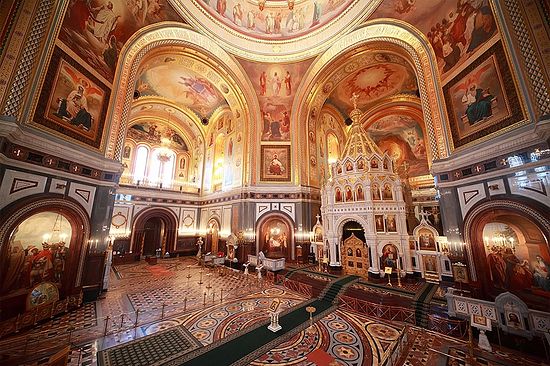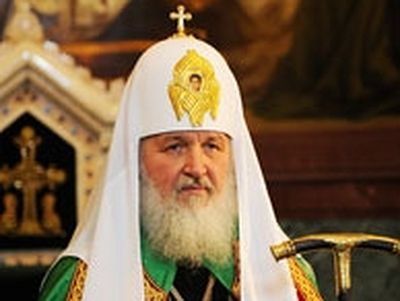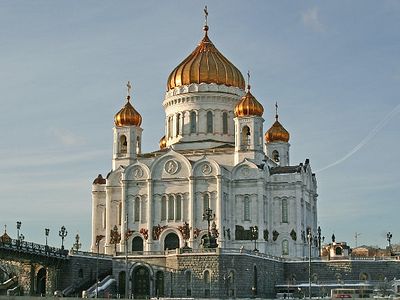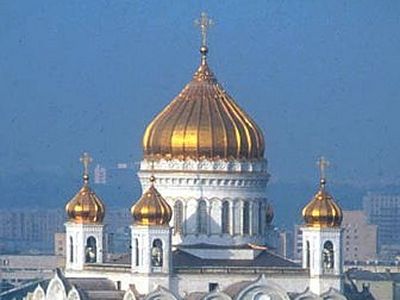September 22, 2015
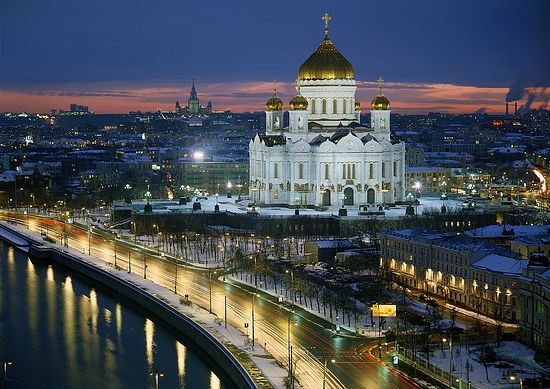 Stunning nightime view of the Cathedral of Christ the Saviour set against the backdrop of snow covered Moscow
Stunning nightime view of the Cathedral of Christ the Saviour set against the backdrop of snow covered Moscow
On September 22 (O.S. September 10), 1839 the Cathedral of Christ the Saviour was solemnly founded by the Metropolitan of Moscow Filaret on the Alexeevsky hill in Moscow to commemorate the 25th anniversary of the end of the Patriotic War and storming of Paris in March of 1814.
The idea to build the cathedral in order to mark the rescue of the Motherland appeared already in 1812. Originally the magnificent building was planned to be built by the design of the architect A. L. Vitberg, but in 1832 the new project prepared by the architect K.A. Thon was approved instead. The place for the erection was chosen by the Emperor Nicholas himself. It was the territory of the old Alexeevsky monastery, whereas the monastery itself was decided to move to Krasnoye Selo (today the Novo-Alexeevky monastery). Money for building was collected in all the churches of Russia, the enormous sum totaling over 15 mil. roubles was provided by the treasury.
The laying of the foundation stone of the Cathedral of Christ the Saviour was a national holiday with military parade and a procession through Moscow to honor veterans of the Patriotic War of 1812 and the prayers for those who perished on the battlefields.
22 (O.S. 10) September 1839 "... Russia’s mother - Moscow seethed in solemn ecstasy ... Moscow residents flocked from all sides to the place of the solemn procession. The army already in order deployed from the Assumption Cathedral to the very place of foundation of the Cathedral of Christ the Saviour. On the other side, to the right of the Cathedral of the Assumption, on sidewalks, in windows and on rooftops crowded spectators of the great capital; everywhere prevailed silence ..." The solemn procession - the clergy in full vestments, the emperor and the entire retinue followed on horseback, "... to the place of execution, by the church of St. Basil, along the embankment and Prechistenka by Carriage Court; it was led by Saint Filaret, Metropolitan of Moscow and Kolomna.
Upon arrival at the foundation site and having pronounced a prayer, Emperor Nicholas I in the base of the temple laid a cruciform bronze plaque with the inscription: "In the summer of 1839, the day of September 10th, by order of the Great Sovereign Emperor Nicholas Pavlovich the sacred vow, given by Emperor Alexander I who had passed away, is to be fulfilled by his own hand of Emperor Nicholas, failing to erect a temple of Christ the Saviour on the Sparrow Hills, as planned before, the foundation stone is laid at this place for the construction of the temple thereof.
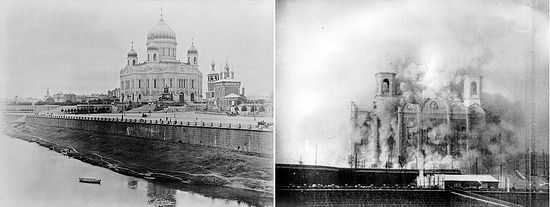 The cathedral as it looked in the early 20th century (right); Its demolition in December 1931 (left)
The cathedral as it looked in the early 20th century (right); Its demolition in December 1931 (left)
The cathedral was being built from 1839 to 1883. Its height from the base to the cross reached 103.5 m, the wall thickness was 3 m 20 cm. The double walls had corridors, which contained 177 marble memorials with the description of the events of the Patriotic War of 1812 and Russian campaigns 1813–1814 in the chronological order. The cathedral was decorated by 38 painters: V. V. Vereshchagin, V. I. Surikov, K. E. Makovsky, F. A. Bruni, I. N. Kramskoy, G. I. Semiradsky etc.
The solemn ceremony of the cathedral’s opening took place on 26 May 1883, the year of Alexander III coronation. The veterans of the Patriotic War of 1812 were invited to the ceremony.
On 5 December 1931 the cathedral-memorial of military glory was destroyed by the explosion. It was decided to build the Palace of Soviets (height 500 m.) on its place, but the Great Patriotic War broke out and the building was disassembled. In 1958 the swimming-pool “Moskva” was constructed on this place.
In 1989 it was decided to rebuild the Cathedral of Christ the Saviour, and in 1990 a temporary cornerstone was laid to the east of the pool. By December 2000 the decoration work was completed. The new cathedral differs from the original one by the stylobate part (too prolonged basement floor) that houses the Museum, the Hall of Church Assemblies, the Church of the Transfiguration, the Conference Hall of the Most Holy Governing Synod, refectory chambers and different technical services. However the new cathedral includes some old elements – marble memorial plaques from the bypass corridors and the fragments of the main iconostasis.
After the restoration the Cathedral of Christ the Saviour became the Cathedral of the Metropolitan of Moscow, where the main church festive services are held.
